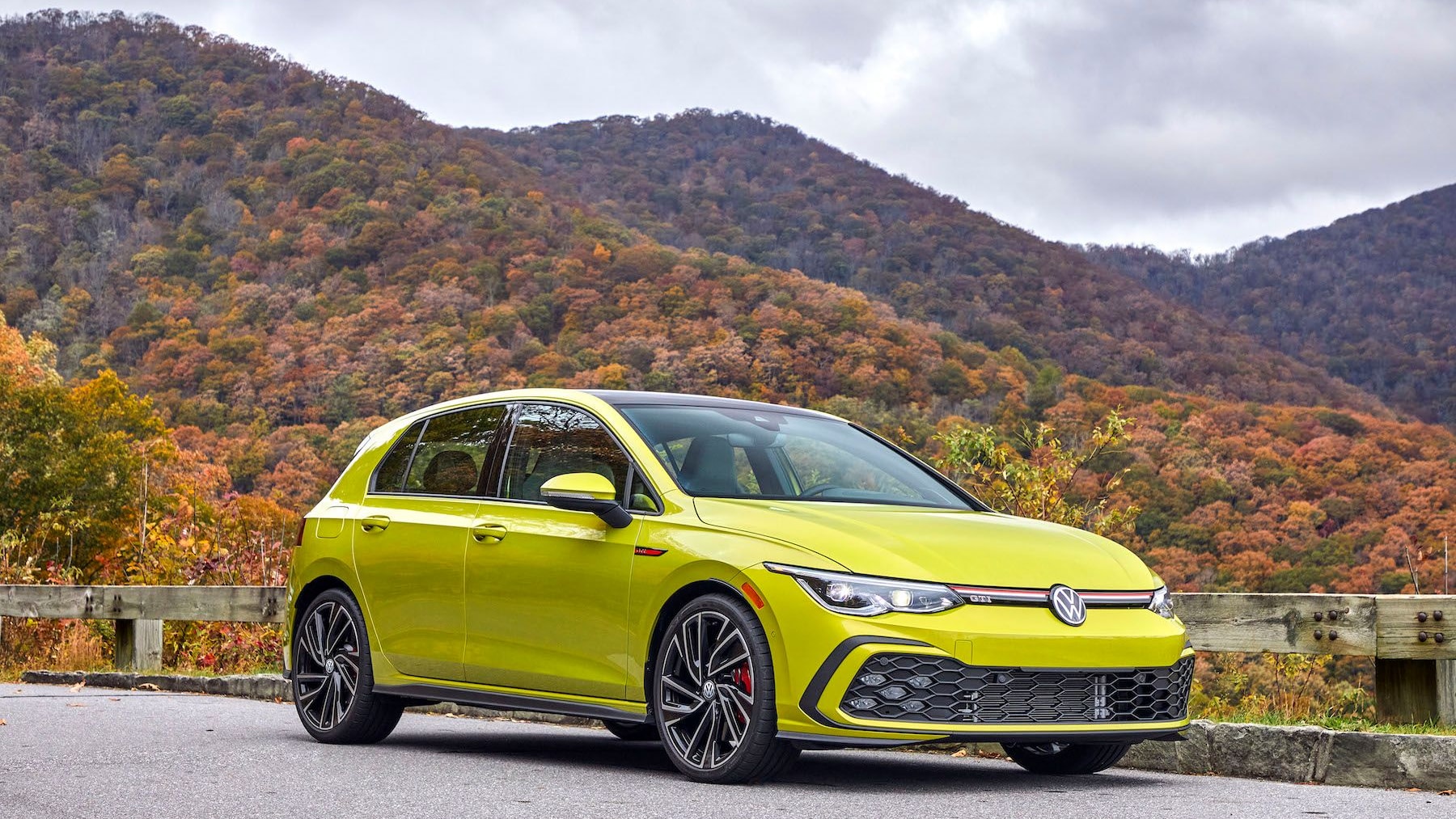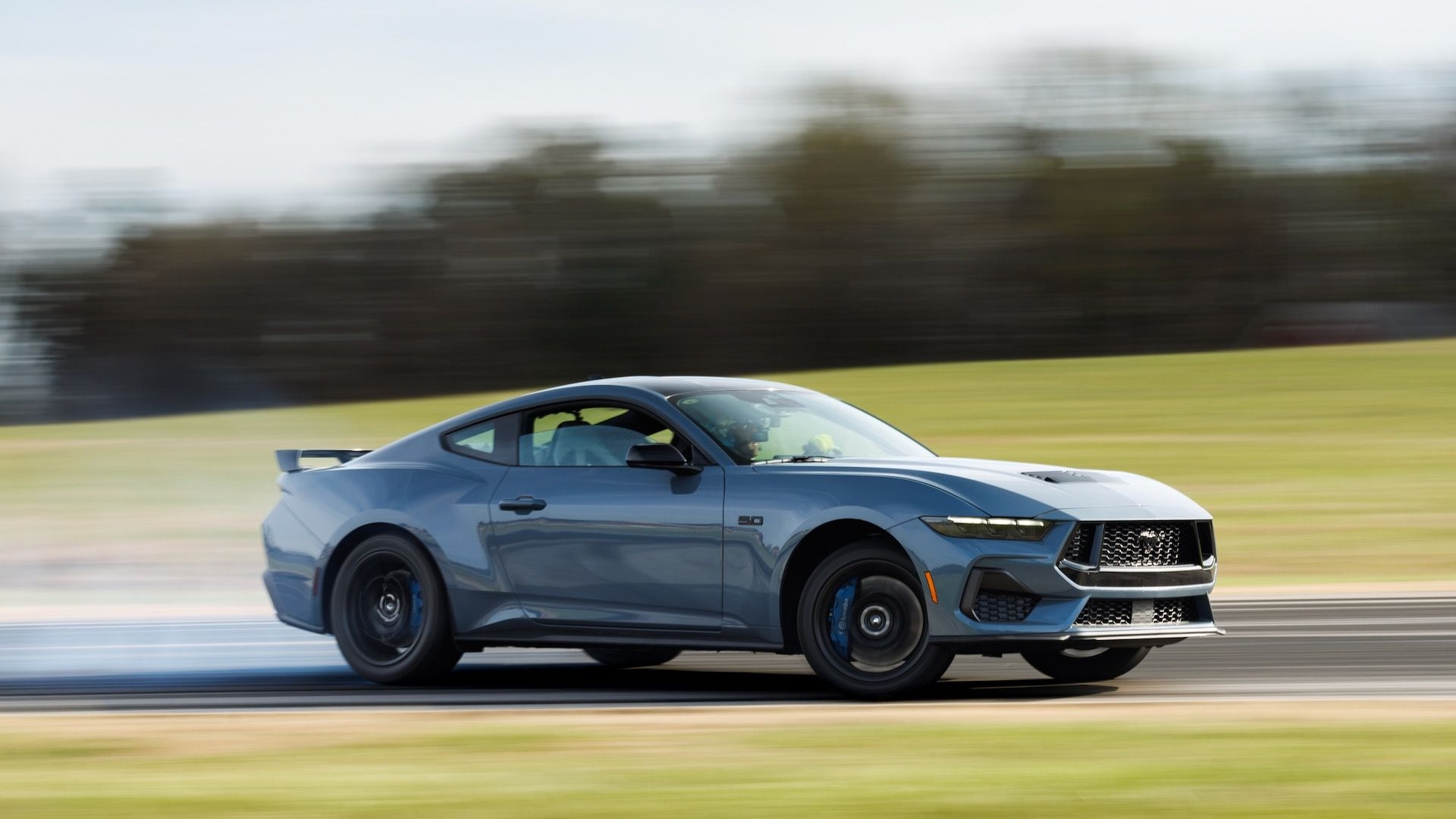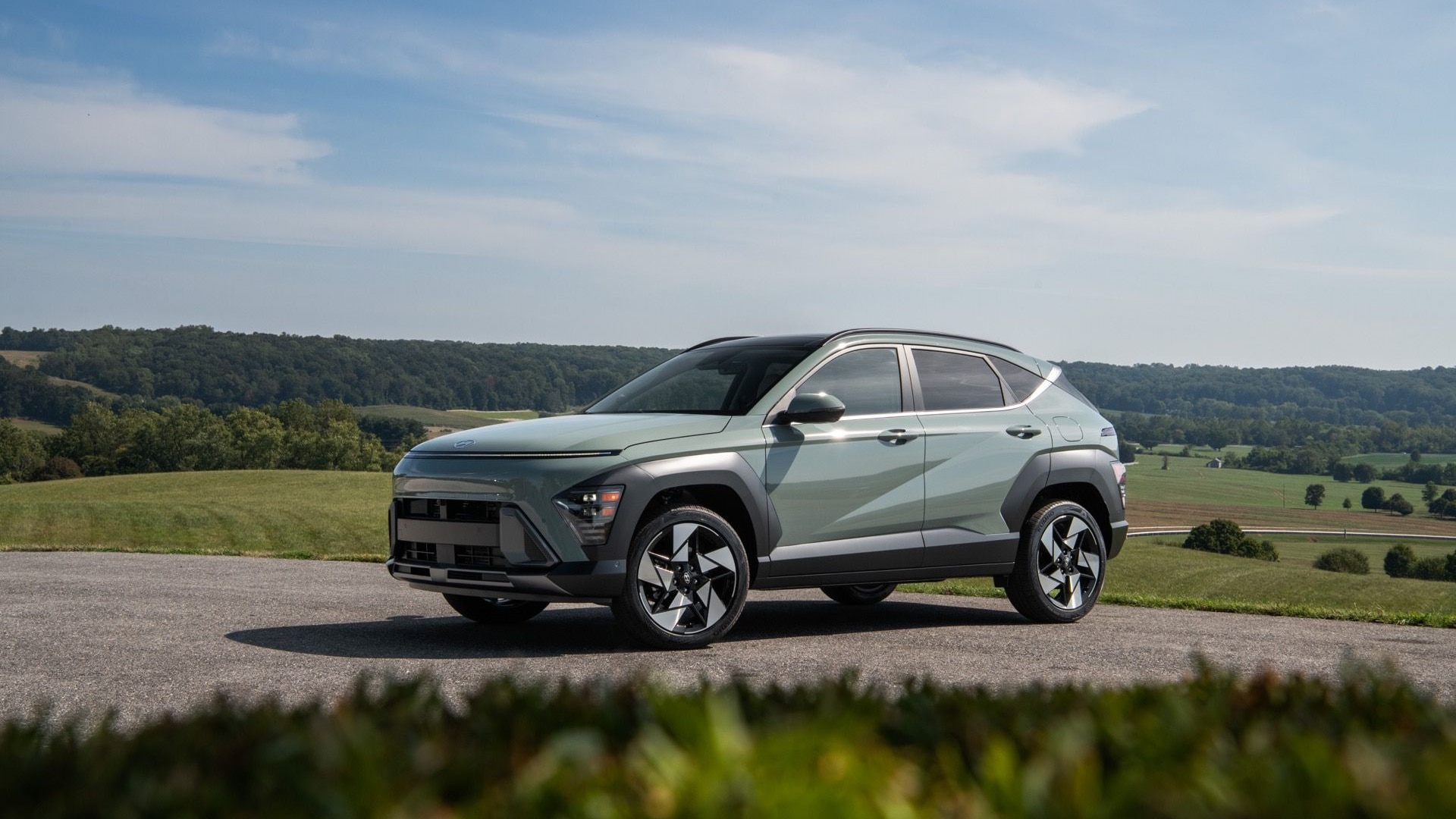If you want a little more driving excitement in your life, but you have to keep it practical and sensibly sized for urban commuting, then the Subaru WRX and Volkswagen GTI should be two possibilities near the top of your shopping list.
While these two models are both completely redesigned for 2015, and they both offer a lot of driving enjoyment, they’re nearly polar opposites in terms of design, performance, and packaging; and if you don’t already see the extent of those differences, you’re going to want to pay close attention to this comparison.
ALSO SEE: 2015 Volkswagen GTI Video Road Test
The walkaround: GTI, by a smidge
Neither of these models are very inspiring to look at, or very inspired in their designs. There really aren’t any design traits in common between these models; and it’s likely you’re going to be able to simply size up these designs and pick a clear favorite.
The WRX is only offered as a four-door sedan this time around, and while Subaru has done a lot to give the WRX a different look than the Impreza—there’s actually different sheetmetal all around—you’ll still see its affordable cousin’s plain three-box profile behind it all. As for the GTI, it’s handsome, with sporty cues, albeit a bit formal. It simply looks a little too much like the rest of the Golf lineup. Visually especially, there’s very little other than some special wheels and badging to separate this from a Golf TDI, for instance. But the profile is hot-hatch sporty; the wheels make it just flashy enough; and altogether it’s probably just the right compromise if you want to look like a mature parent.
Under the hood: WRX wins
The Subaru WRX got quite the upgrade under the hood going into 2015; its new direct-injection turbocharged 2.0-liter "boxer" turbo four now makes 268 horsepower, and because its peak 258 pound-feet of torque is delivered beginning at just 2,000 rpm you no longer catch the WRX flat-footed if you’re trying to slingshot out of a corner and forgot to keep the revs up. The GTI’s 2.0-liter direct-injection turbo four only makes 210 horsepower (220 with the Performance Package), but it feels nearly as lively in everything but all-out acceleration runs or high-speed passes, and its peak torque is the same as the Subaru’s engine.
DON'T MISS: 2016 Ford Mustang Shelby GT350 Sounds Brutal In Engine Rev Video
Stepping in: Too close to call
Inside, looking at cabin layout from the driver's seat, both of these models are all business; there’s nothing all that super-performance-oriented (or gimmicky) about the cabins or the interfaces—although the WRX does have a separate configurable display that can show things like turbo boost. On the GTI, the cabin feels high quality, but it's a little drab; a red-stitched, flat-bottom steering wheel (just like the WRX) and available plaid upholstery are the most flamboyant things about the interior.
Heading to the backroads: Too close to call
Now’s the time to point out the elephant in the room: The WRX has all-wheel drive, while the GTI is only offered with front-wheel drive (if you want all-wheel drive, by the way, you’ll have to head over to the much pricier Golf R). While that sounds like a big deal, it actually isn’t—unless you really do plan to drive the WRX rally-style, or to drive year-round on snowy roads.
The WRX’s system feels honest, and it gives you immense confidence; its torque distribution is predictable, and the steering feels direct and well-weighted, adding up to a car that’s superbly well-balanced. On some very curvy, challenging driving roads we’ve found that the GTI is able to pull off some automotive parkour of its own without AWD—thanks to an electronically managed mechanical limited-slip front differential (part of the Performance Package) and excellent variable-ratio steering. There’s no plowing understeer here; the systems in the GTI will actually nudge your line, in subtle, seemingly magical ways, back tighter.
DON'T MISS: 2016 Chevrolet Camaro Preview And Prototype First Drive
The ride, the shifting choices: GTI wins
Those differences are underscored in ride quality. With stiffer shocks, quicker spring rates, and bigger-diameter anti-sway bars, the WRX has a very taut—almost stiff—feel on a variety of roads that lights up its enthusiast fans and damps enthusiasm for it as a daily driver. It’s what gives it awesome transient responses, but it can be too rough and tiring in hundred-mile drives with poorly maintained road surfaces. On the other hand, the GTI can be optioned with Dynamic Chassis Control, an upgrade that really does make the VW the civil, refined pick of the two.
Both the WRX and the GTI offer a standard six-speed manual gearbox. In both cases, the linkage isn’t as precise as what we’d like from a performance model. Yet if you don’t want to shift yourself all the time the alternatives are quite different. On the WRX, you can get a continuously variable automatic transmission (CVT)—but before you see that as a net negative, consider that it’s actually pretty great performance option, with eight virtual gears to choose from with paddle shifters. You might think it’s a conventional eight-speed automatic.
As for the GTI, it’s offered with a six-speed version of their dual-clutch DSG gearbox, which pulls off super-quick shifts and does a great job replacing a manual or playing an automatic. As good of a job as Subaru did with the CVT, VW’s DSG is the best it gets without a manual.
Usefulness and functionality: GTI wins
Although it’s difficult to compare a sedan and a hatchback—because they’re aiming at different wants and needs, after all—it’s the GTI that’s the narrow winner here, both in comfort and functionality. While both of these models are spacious and practical, the GTI’s back seats are more comfortable, there’s less road noise in the cabin, and the seats fold forward to turn this hatchback into a weekend-project-hauling machine when needed.
Additionally, there’s a maturity factor for the GTI that you’re simply going to love or hate. The GTI won’t wear you out playing boy-racer all the time. Cruising on the highway, with its level of refinement, the solid switchgear, and the cabin ambiance, you could almost as well be in, say, an Audi A3. On the other hand, the WRX never feels premium—but it won’t feel stodgy either.
CHECK OUT: 2016 Cadillac ATS-V First Drive Video
Features: GTI offers a little more, but at a price
Both of these models don’t go above and beyond with features, and they have unimpressive infotainment systems; but the GTI is just a step ahead in tech options—things like bi-xenon headlamps, a forward-collision warning system, and dynamic chassis control. But all those options come at a price that can drive the GTI’s sticker price toward the $35k mark.
All intents and purposes, go with your heart
One of the most telling statements in this comparison, perhaps, is that the WRX feels a little more like a performance car all the time. And the GTI feels like something a little more grown-up...until you drive it hard.
Which one is right for you? These two cars both spice up sensible, affordably, but in very different ways. If performance bang for the buck and real four-season driving enjoyment are your priorities in a practical small car, then you’ll probably head straight to the WRX. But if you want a car that looks and drives like a true hot hatch when you want it to, but feels more sophisticated the rest of the time, the GTI sings your song.
_______________________________________



